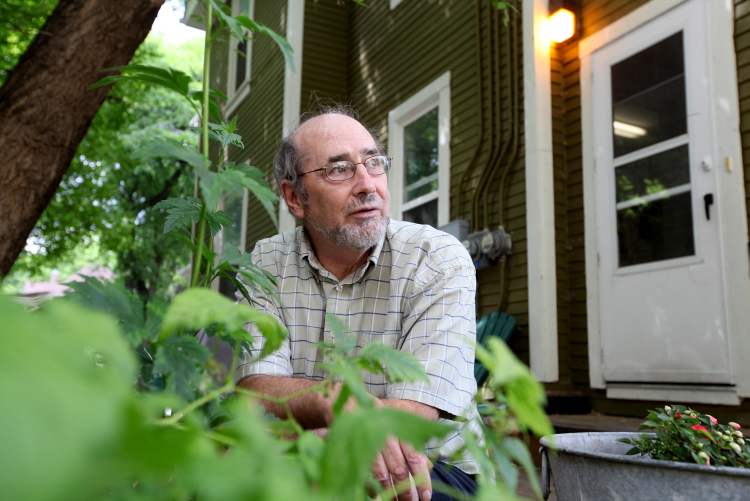Perspectives on rooming houses from a man who’s studied them
Author has tracked issue in core over many decades
Advertisement
Read this article for free:
or
Already have an account? Log in here »
To continue reading, please subscribe:
Monthly Digital Subscription
$1 per week for 24 weeks*
- Enjoy unlimited reading on winnipegfreepress.com
- Read the E-Edition, our digital replica newspaper
- Access News Break, our award-winning app
- Play interactive puzzles
*Billed as $4.00 plus GST every four weeks. After 24 weeks, price increases to the regular rate of $19.00 plus GST every four weeks. Offer available to new and qualified returning subscribers only. Cancel any time.
Monthly Digital Subscription
$4.75/week*
- Enjoy unlimited reading on winnipegfreepress.com
- Read the E-Edition, our digital replica newspaper
- Access News Break, our award-winning app
- Play interactive puzzles
*Billed as $19 plus GST every four weeks. Cancel any time.
To continue reading, please subscribe:
Add Winnipeg Free Press access to your Brandon Sun subscription for only
$1 for the first 4 weeks*
*$1 will be added to your next bill. After your 4 weeks access is complete your rate will increase by $0.00 a X percent off the regular rate.
Read unlimited articles for free today:
or
Already have an account? Log in here »
Hey there, time traveller!
This article was published 20/07/2013 (4460 days ago), so information in it may no longer be current.
MIKE Maunder scoffs at this, but many consider him the authority on rooming houses, one of the inner city’s trickiest problems.
Rooming houses, which offer a roof for the very poor, are disappearing and tend to fall through the cracks of regulations, programs and policies meant to protect tenants and bolster conscientious landlords — a problem the Free Press explored this week in depth.
This is not news to Maunder. A former West Broadway Community Organization board member, Maunder co-authored a seminal 2002 rooming-house report by the University of Winnipeg’s Institute of Urban Studies and then, several years later, co-authored a history of rooming houses on one block of Furby Street, their transition from respectable boarding houses to some of the worst units.

Sitting in his back garden in West Broadway, Maunder spoke with the Free Press earlier this week.
Q: My partner’s parents both lived in West Broadway rooming houses when they were young — a lawyer and a teacher. They would not be the common rooming-house tenant now. Why has this changed so much?
A: I lived in a rooming house when I was 19, 20, 21, starting in the newspaper business. We went down Sunday mornings and had breakfast, and it was a very respectable way to live. I think it really changed in the ’50s and the ’60s with the whole growth of the suburbs, the growth in prosperity. Life became more independent. Young families were living in apartments, but now they had the desire to have their own house in the suburbs with a fence and a lawn. Prosperity made that possible. At the same time, there was growth in poverty. Those who had become prosperous moved on to apartments, and rooming houses were left for those in poverty. Robert Putnam’s book Bowling Alone talks about the decline of social capital, and I think that decline is part of the reason this kind of housing has declined as well.
Q: You’ve traced that change on Furby Street over a century. Since you did that report five years ago, how have you seen Furby change, and really the whole neighbourhood, when it comes to rooming houses?
A: Two or three basic changes. The guys I know running rooming house are having to get out of it. They’ve simply said, “You can’t make this work on welfare rates.” And they have such a difficult time getting any other source of funding that it’s just inevitable the place will run down. Not only that, the social problems accumulate and they might have energy to deal with them for five years. But 10 years? Twenty years? On Furby, a lot of the rooming houses are up for sale. I think one of the best social agencies in the city is Westminster Housing, and they purchased several rooming houses on Furby and converted them into triplexes or bachelor units. Inevitably, rooming houses are bought, and even if they are bought by a social agency like Westminster Housing, which does a really good job, you’re taking what was accommodation for 16 or 17 and turning it into three or four units. The third change is what you already documented — the work West Broadway is doing building the social fabric of a rooming house. Jovan (Lottis, the rooming-house outreach worker) is working with the tenants, building capacity. They are still living in a rooming house but they are happier.
Q: What would make it easier for owners to keep rooming houses, improve them a little, keep them as this critical part of the housing inventory?
‘Those who had become prosperous moved on to apartments, and rooming houses were left for those in poverty’
— Mike Maunder
A: I think, number one, the kind of program West Broadway is doing. At the basic level, if you have a place where you are concentrating the poorest people in society and then you don’t provide any support for them, then you are not helping them in any way. I think, directly for owners, there could be all kinds of financial incentives because it’s clear you can’t make it work at the welfare rate.
One group of people says “Well, look, let’s raise the welfare rate,” and I think that is probably appropriate. But you could offer grants to owners to assist them in making rooming houses better places to live. For instance, you say, “You have 17 people living here but you only have two washrooms, so we’re going to allow you to improve those two washrooms and build two more, which would be more appropriate.” That kind of thing could really help improve the life in a rooming house.
(Interview edited for space).
maryagnes.welch@freepress.mb.ca










